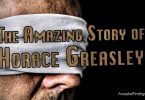Pets are important parts of our lives and families, and they were just as important to our ancestors. Just look at the Little House on the Prairie book series by Laura Ingalls Wilder; in her early books, which cover her young childhood years, she talks a lot about the family dog Jack, the brindle bulldog. This was in the early 1870’s that the stories with Jack took place, and she talks about how Jack would walk for hundreds of miles across the prairie under their covered wagon as he accompanied the family on their various moves as pioneers. Even in old age, when she wrote the books, Wilder still thought fondly of her childhood dog. Pets are essentially furry, four-legged family members, and they should be remembered in our family histories for the important parts they played in our lives, just as Wilder remembered Jack (and now countless generations of people know about Jack, too). Here’s how to do it.
First of all, you should record information about your own pets in your family tree. Make notes about them, tell stories, and include photos. Tell about how you felt about them, how you interacted with them, and why they were important to you and/or your family. If you have any relics of your pets, such as things that belonged to them, start a memory box of heirlooms for that pet, just as you would for a human relative, and store it with your other heirloom collections. This way, future generations will know about your pets and how they were part of your family.
Next, do the same thing with your relatives of all ages. Ask them about their pets, their fondest memories of them, funny or meaningful or cute stories they have to tell about them and get copies of photos of the pets. Include these in your family tree narrative.
You will also want to discover details about the pets of your ancestors who you never met. You can do this by asking older relatives. For generations where there are no people living who remember those ancestors, you will have to do a little more research. You can use several different sources to find out about your ancestors’ pets. Some good resources include:
- Old Photos: Your ancestors may have taken photos with their pets. If you’re lucky, they labeled the photos with the pets’ names. Even if the names aren’t there, you can get an idea of who had what type of pet and how they interacted with them by looking at the photos.
- Old Letters and Diaries: If you have any old letters or diaries that belonged to your ancestors, or know where to find them, look through them carefully for any mention of pets and how your ancestor interacted with and felt about the pet.
- Old Newspaper Articles: It’s not something you usually find, but every now and then, you may come across a story about your ancestor and their pet, especially if the pet was special in some way or did something extraordinary, or if the bond between pet and person was so strong it was noted by the community.
Gather this evidence together, and you will have a much richer family history narrative by including information about the lives you and your ancestors have shared with your pets. The pets themselves will get the recognition, honor, and memory for future generations they deserve, too.






